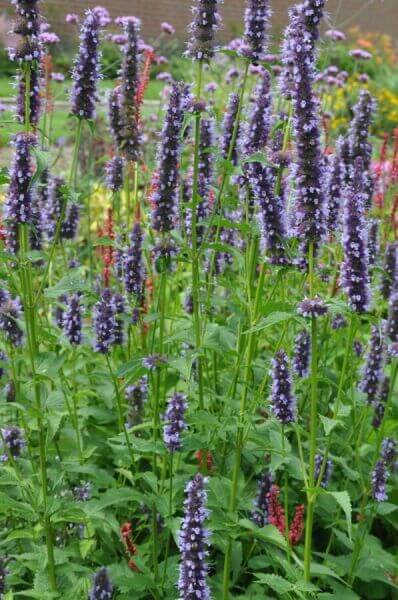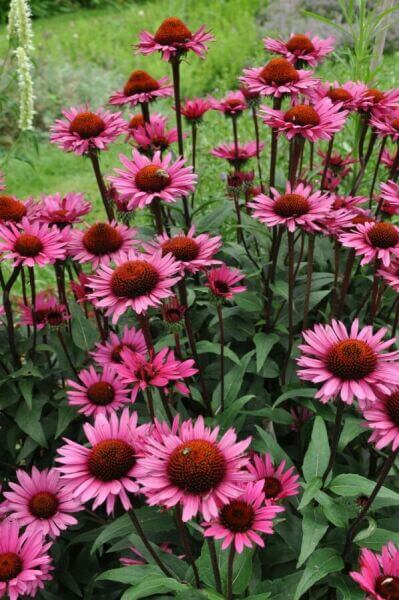Hedging Plants For Clay Soil
Hedging Plants For Clay Soil
Blog Article
Hedge Plants For All-year Screening
Boost your garden's attraction with rich hedge ranges such as Yew (Taxus), Thuja, Laurel, Photinia, and Bamboo, commemorated for their structural integrity and ecological benefits.
Yew and Thuja offer evergreen protection and winter season durability, while Laurel uses rapid growth and broad, aromatic leaves.
Photinia includes seasonal appeal with its dynamic red foliage, and Bamboo provides a low-maintenance, serene ambiance.
These hedges enhance air quality, lower noise, and develop tranquil, personal spaces.
Correct planting, spacing, and maintenance ensure vigorous development and ecological harmony.
Check out how these lavish ranges can raise your garden's appeal and well-being.
Secret Takeaways
Transform Your Garden With Lush Hedge Varieties
- Select Yew for its thick, evergreen development and unrivaled longevity.
- Choose Laurel for its fast growth and broad leaves, making sure quick personal privacy.
- Pick Photinia for its vibrant seasonal foliage, which turns a striking dark red.
- Make use of Bamboo for a low-maintenance, winter-hardy hedge with visual appeal.
- Space plants 2-3 per meter and prune frequently for optimum development and health.
Popular Hedge Plants
When transforming a garden with lush hedge varieties, it's important to think about popular hedge plants such as Yew, Thuja, Laurel, and Photinia due to their unique characteristics and advantages.
Yew (Taxus) is highly esteemed for its longevity and dense, green growth, making it a prime choice for withstanding landscapes.
Thuja is kept in mind for its evergreen foliage and robust winter season resilience.
Photinia includes seasonal vibrancy with red leaves that darken in time, producing dynamic visual appeal.
Laurel offers quick growth and fragrant, broad leaves, ideal for quick privacy.
Additionally, Bamboo is an excellent choice for ambiance, using a low-maintenance, winter-hardy alternative that boosts the garden's aesthetic with its elegant, swaying walking sticks.
These choices accommodate a variety of horticultural needs and choices.
Advantages of Garden Hedges
Garden hedges provide a plethora of advantages, making them an important addition to any landscape. These natural barriers are affordable to implement and supply considerable wind security, boosting air blood circulation and contributing to noise reduction. The dense foliage of hedges like Thuja and Beech makes sure personal privacy by obstructing visibility, creating a tranquil and secluded environment.
Hedges also play an essential function in microclimate policy, providing a stable environment that promotes plant growth and decreases temperature level changes. Their elaborate leaf structures filter contaminants, improving air quality and adding to a healthier garden ecosystem.
Additionally, hedges master noise decrease, absorbing and deflecting acoustic waves to lower ambient noise levels. This double performance of providing both visual and acoustic personal privacy boosts the general tranquility and aesthetic appeal of any garden.
Planting and Upkeep Tips
For a successful hedge, meticulous preparation of the planting location is important. Guarantee the soil has correct pH and drainage to support strong root development.
Area the plants properly for the chosen species. Water the hedge regularly during its initial development stage, adjusting as required with seasonal changes.
Execute a systematic insect control and illness prevention strategy, using natural or chemical treatments when essential. Routinely examine for aphids, mites, and fungal infections.
Apply mulch to retain wetness and suppress weeds. Seasonal pruning promotes dense growth and air flow, necessary for plant health.
Following these standards will help you cultivate a vibrant, well-kept hedge that improves the charm of your garden.
Spacing and Trimming Guidelines
Spacing and Trimming Guidelines
Correct spacing and cutting are vital for cultivating healthy, aesthetically appealing hedges. Adequate spacing guarantees each plant gets adequate nutrients, light, and airflow.
Follow these guidelines for ideal hedge upkeep:
- Spacing: Position hedge plants 2-3 plants per meter to motivate robust growth.
- Pruning Methods: Regular pruning is essential for maintaining desired hedge height and shape. Trim brand-new growth in summer season and cut back older wood during winter.
- Seasonal Care: Adjust trimming techniques and schedules according to seasonal requirements to ensure plant health.
- Hedge Height: Routinely screen and trim to maintain the desired hedge height and accomplish consistent visual appeals.
Adhering to these actions will guarantee your hedge prospers, improving both the appeal and performance of your garden.
Picking the Right Hedge
Picking the Right Hedge
Picking the suitable hedge involves examining elements such as mature height, foliage density, and environmental durability. Successful hedge plant selection needs understanding each types' development characteristics and site-specific adaptability.
For instance, Yew (Taxus) offers excellent durability and dense growth, while Thuja is significant for its winter durability. Additionally, thinking about maintenance requirements is crucial; fast-growing types like Laurel or Privet demand routine trimming, whereas low-maintenance alternatives like Bamboo or Ivy might be preferable for those looking for very little maintenance.
Ecological factors such as soil type, light schedule, and wetness conditions need to also assist the selection procedure. This careful method makes sure the selected hedges will thrive, supplying both aesthetic and practical advantages to the garden landscape.
Shipment and Planting Guidance
To guarantee your hedge plants thrive, they ought to be provided by specialized couriers and planted without delay upon arrival.
Follow these important actions for effective planting:
- Soil Preparation: Enrich the soil with organic matter to enhance drainage and nutrient material.
- Planting Depth: Develop a trench two times the width and equal to the depth of the root ball.
- Watering Methods: Water completely after planting, keeping the soil regularly moist but not saturated.
- Mulching: Use a layer of mulch to retain moisture and suppress weeds.
Client Assistance and Service
Given the essential function of timely support in horticultural pursuits, our client assistance group is readily available six days a week through telephone, email, and social media to provide skilled suggestions and swiftly attend to any issues. Their dedication to quick reaction times guarantees client fulfillment by solving questions connected to plant health, optimal planting methods, and upkeep schedules.

Communication Approach
-------------------
Within 24 hours
This comprehensive support group, strengthened by an excellent 9.3/ 10 consumer ranking, highlights our dedication to enhancing the gardening experience for every client.
Often Asked Questions
For How Long Does It Consider Hedge Plants to Develop?
Hedge plants normally need one to 3 years to end up being completely developed, with the precise period differing by species and growing conditions.
Efficient care during this crucial period is important for robust growth. Consistent watering, vigilant weed control, and proper fertilizer application are essential in promoting strong root advancement.
For instance, fast-growing species like Laurel may establish quicker, while slower-growing ranges such as Yew may take longer. Persistent maintenance accelerates the facility procedure, leading to healthy and dense hedges.
What Are the Best Hedge Plants for Personal Privacy?
The concern of the best hedge plants for privacy includes examining evergreen and deciduous choices.
Evergreen hedges like Thuja, Laurel, and Cypress provide year-round coverage, making sure constant privacy.
On the other hand, deciduous hedges such as Beech use seasonal privacy, shedding leaves in colder months.
Secret maintenance suggestions for personal privacy hedges consist of regular cutting, fertilizing in spring, and appropriate spacing-- typically 2 to 3 plants per meter.
In addition, constant watering and diligent weed elimination are essential for promoting healthy, dense development.
Can Hedge Plants Attract Wildlife to My Garden?
Yes, hedge plants can bring in wildlife to your garden by offering essential advantages like shelter, food, and nesting sites, consequently enhancing regional biodiversity. For instance, yew, holly, and laurel are exceptional for drawing in birds, while ivy supports a range of insects.
Nevertheless, it's important to keep in mind that there are some drawbacks, such as increased maintenance to handle pests and routine upkeep. Carefully selecting and preserving hedge varieties can assist stabilize these drawbacks and advantages, eventually promoting a lively and sustainable environment in your garden.
Are There Any Flowering Hedge Plants Available?
Yes, there are flowering hedge plants readily available that can enhance the charm of your garden.
For instance, Elaeagnus, also known as Olive Willow, produces aromatic white flowers in the fall, adding a touch of elegance.
Photinia, another popular option, showcases lively red leaves that mature into a rich green, producing a vibrant visual result throughout the seasons.
To ensure these plants flourish, it's vital to practice correct pruning methods and seasonal upkeep, such as trimming new growth in the summer season and cutting down in the winter.
These procedures will help preserve the health and visual appeal of your flowering hedges.
How Do I Prevent Insects in My Hedge Plants?
To avoid bugs in hedge plants, use natural pest control methods and preserve appropriate hedge care. Introduce helpful pests like ladybugs, which prey on harmful pests, to create a well balanced environment.
Frequently check your hedges for indications of invasion and without delay Article source eliminate any afflicted parts to avoid the spread. Ensure the health of your hedges by using balanced fertilizers and offering sufficient water.
Use mulching to keep soil moisture and proper spacing to reduce plant stress and promote robust development. These practices jointly assist in decreasing bug issues and maintaining a healthy hedge.
Conclusion
In essence, picking the ideal hedge ranges such as Yew, Thuja, and Laurel can transform any garden into a peaceful haven. These plants supply year-round greenery, enhance visual appeal, and deal practical benefits like noise reduction and wind defense.
Correct planting methods, precise spacing, consistent watering, and seasonal trimming are essential for ideal growth.
Trustworthy delivery services and expert consumer support ensure a smooth experience from purchase to planting, making it simpler than ever to raise your outdoor area.
Garden hedges provide a wide range of advantages, making them an important addition to any landscape. These natural barriers are affordable to implement and provide substantial wind security, boosting air flow and contributing to sound reduction. The thick foliage of hedges like Thuja and Beech makes sure privacy by blocking visibility, developing a serene and remote environment.

Pruning Methods: Routine pruning is vital for preserving desired hedge height and shape. Cut brand-new growth in summer season and cut back older wood throughout winter.
Report this page